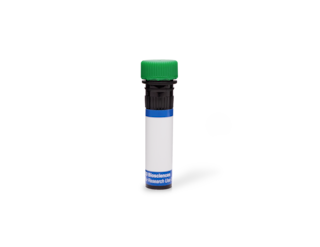-
Reagents
- Flow Cytometry Reagents
-
Western Blotting and Molecular Reagents
- Immunoassay Reagents
-
Single-Cell Multiomics Reagents
- BD® OMICS-Guard Sample Preservation Buffer
- BD® AbSeq Assay
- BD® Single-Cell Multiplexing Kit
- BD Rhapsody™ ATAC-Seq Assays
- BD Rhapsody™ Whole Transcriptome Analysis (WTA) Amplification Kit
- BD Rhapsody™ TCR/BCR Next Multiomic Assays
- BD Rhapsody™ Targeted mRNA Kits
- BD Rhapsody™ Accessory Kits
- BD® OMICS-One Protein Panels
- BD OMICS-One™ WTA Next Assay
-
Functional Assays
-
Microscopy and Imaging Reagents
-
Cell Preparation and Separation Reagents
Old Browser
This page has been recently translated and is available in French now.
Looks like you're visiting us from {countryName}.
Would you like to stay on the current location site or be switched to your location?
BD Transduction Laboratories™ Purified Mouse Anti-Human XRCC4
Clone 4/XRCC4 (RUO)





Western blot analysis of XRCC4 on a HeLa cell lysate (Human cervical epitheloid carcinoma; ATCC CCL-2.2). Lane 1: 1:250, lane 2: 1:500, lane 3: 1:1000 dilution of the mouse anti-human XRCC4 antibody.

Western blot analysis of XRCC4 on a HeLa cell lysate (Human cervical epitheloid carcinoma; ATCC CCL-2.2). Lane 1: 1:250, lane 2: 1:500, lane 3: 1:1000 dilution of the mouse anti-human XRCC4 antibody.

Immunofluorescence staining of HeLa cells (Human cervical epitheloid carcinoma; ATCC CCL-2.2).




Regulatory Status Legend
Any use of products other than the permitted use without the express written authorization of Becton, Dickinson and Company is strictly prohibited.
Preparation And Storage
Recommended Assay Procedures
Western blot: Please refer to http://www.bdbiosciences.com/pharmingen/protocols/Western_Blotting.shtml
Product Notices
- Since applications vary, each investigator should titrate the reagent to obtain optimal results.
- Please refer to www.bdbiosciences.com/us/s/resources for technical protocols.
- Caution: Sodium azide yields highly toxic hydrazoic acid under acidic conditions. Dilute azide compounds in running water before discarding to avoid accumulation of potentially explosive deposits in plumbing.
- Source of all serum proteins is from USDA inspected abattoirs located in the United States.
Companion Products


DNA double-strand breaks (DSB) are generated during intrinsic eukaryotic DNA recombination events such as assembly of antigen receptor genes and meiotic and mitotic recombination. DSB repair proteins are also required to repair breaks induced by extrinsic factors such as ionizing radiation and mutagenic chemicals. DNA-PKcs, Ku70/Ku80, DNA ligase IV, and X-Ray Cross Complementation group 4 (XRCC4) are DSB proteins involved in both V(D)J recombination and DNA double-stranded break repair. XRCC4 activates DNA ligase IV and cells deficient in XRCC4 inefficiently form coding joints and signal joints during V(D)J recombination. XRCC4 contains a C-terminal nuclear localization sequence (NLS) and multiple phosphorylation sites, binds DNA, and is an effective substrate for DNA-PK. Phosphorylation of XRCC4 has no effect on its interactions with DNA ligase IV or end-joining activity, but can inhibit its DNA binding activity. Mice deficient in XRCC4 exhibit defects in lymphogenesis and apoptotic death of postmitotic neurons during neurogenesis. Thus, XRCC4 is a ubiquitous protein involved in DNA end joining during DNA recombination and repair, which is critical for cell growth and survival.
Development References (3)
-
Gao Y, Sun Y, Frank KM, et al. A critical role for DNA end-joining proteins in both lymphogenesis and neurogenesis. Cell. 1998; 95(7):891-902. (Biology). View Reference
-
Li Z, Otevrel T, Gao Y, et al. The XRCC4 gene encodes a novel protein involved in DNA double-strand break repair and V(D)J recombination. Cell. 1995; 83(7):1079-1089. (Biology). View Reference
-
Modesti M, Hesse JE, Gellert M. DNA binding of Xrcc4 protein is associated with V(D)J recombination but not with stimulation of DNA ligase IV activity. EMBO J. 1999; 18(7):2008-2018. (Biology). View Reference
Please refer to Support Documents for Quality Certificates
Global - Refer to manufacturer's instructions for use and related User Manuals and Technical data sheets before using this products as described
Comparisons, where applicable, are made against older BD Technology, manual methods or are general performance claims. Comparisons are not made against non-BD technologies, unless otherwise noted.
For Research Use Only. Not for use in diagnostic or therapeutic procedures.